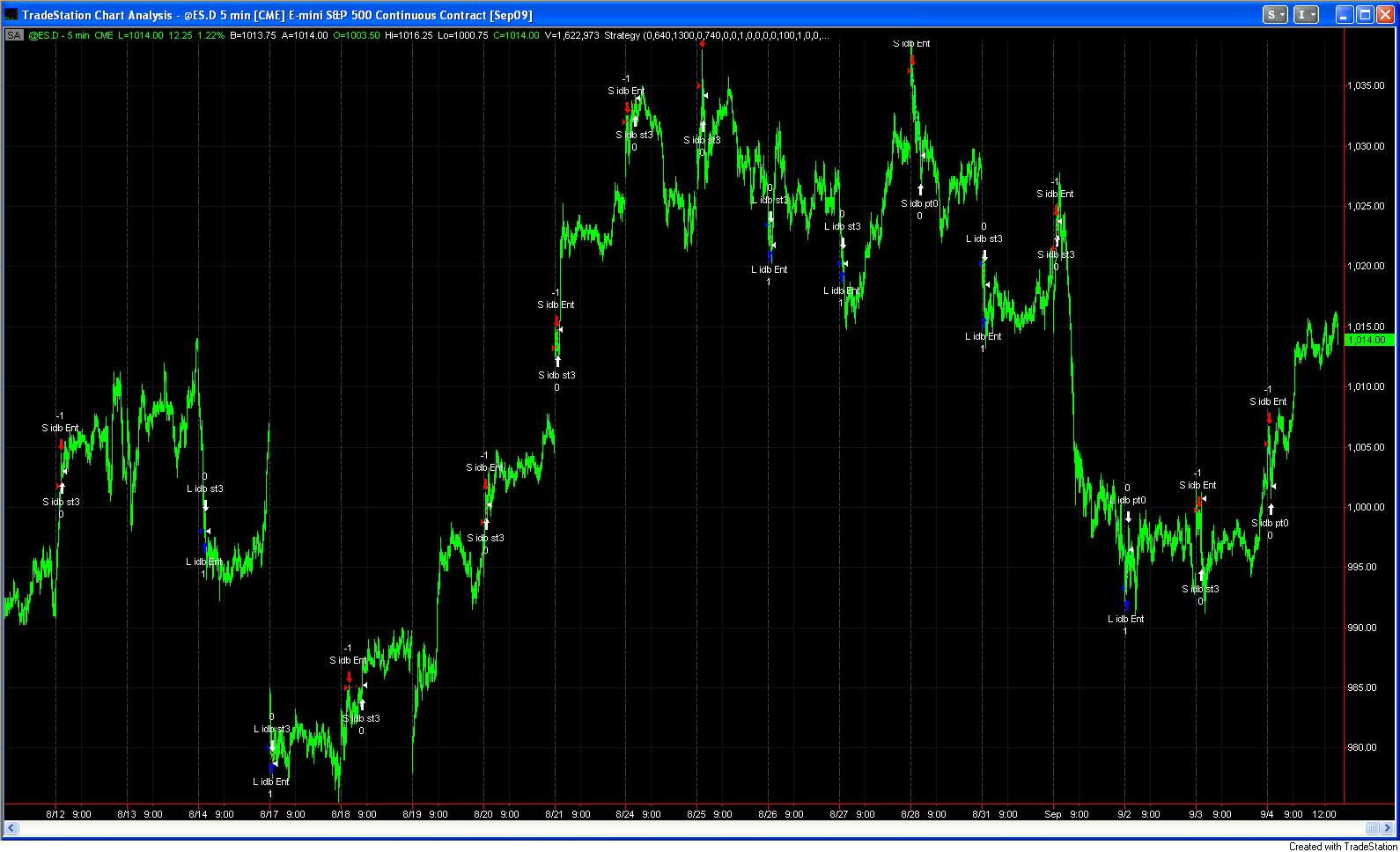Pre-Validating a Trading Idea, 09/07/09
Pre-Validating a Trading Idea - A First Look at Brett's Transition Trading System
Again, I'm going to use some of the concepts from Introduction to Testing Trading Ideas to run a quick test of Brett's Transition Trading system in order to validate it and share the lessons we can learn from such a test. The test technique works with trading ideas the same way we saw it work in validating the Trend Day Indicator.To validate the Transition Trading System, I'm going to examine the historical results as if it had been a traded as an automated trading system. Then I'm going to review those results looking for positive expectation and statistical significance.

The Transition Trading System in Action - Busy Isn't It?
Transition Trading System Rules
- In the first hour of trading, sell if price exceeds the prior day's high,
buy if price exceeds the prior day's low.
[Note: In an earlier version of this paper, buy and sell rules were reversed but test system logic was correct] - Use a profit target of yesterdays close (proxy for Brett's volatility pivot)
- Use a volatility-based stop loss of about 2 pts, or
- Exit at end of day
Results, e-mini S&P Futures, 1998-present, slippage and commissions not deducted
630/1941, 32%, avg 0.27 pts, sd 4.3 pts, z 2.8The t score of 2.8 means the results are significant to almost 3 standard deviations leaving little liklihood they occurred by chance alone. In general, we are looking for a t score higher than 1.6.
Thoughts on the Results
- The results are hugely affected by the stop placement
- Time does make a difference - performance degrades after the first hour
- The strategy is consistent over time
- The edge is small, a quarter point, and that before deducting for slippage and commission
- The ratio of expecation to standard deviation is 16.1 which is very high
What does it all mean?
Since the results and t score show the Transition Trading System produce a positive expectation on its trades and the t score shows those results are unlikely to have occurred by chance alone, it means the Transition Trading System is generating statistically valid signals and providing real information about potential future market movements.That doesn't mean the edge can be exploited. I, for example, wouldn't be able to automate this. That may be good news for discretionary traders because they probably won't be fighting a lot of computers for the same expectation.